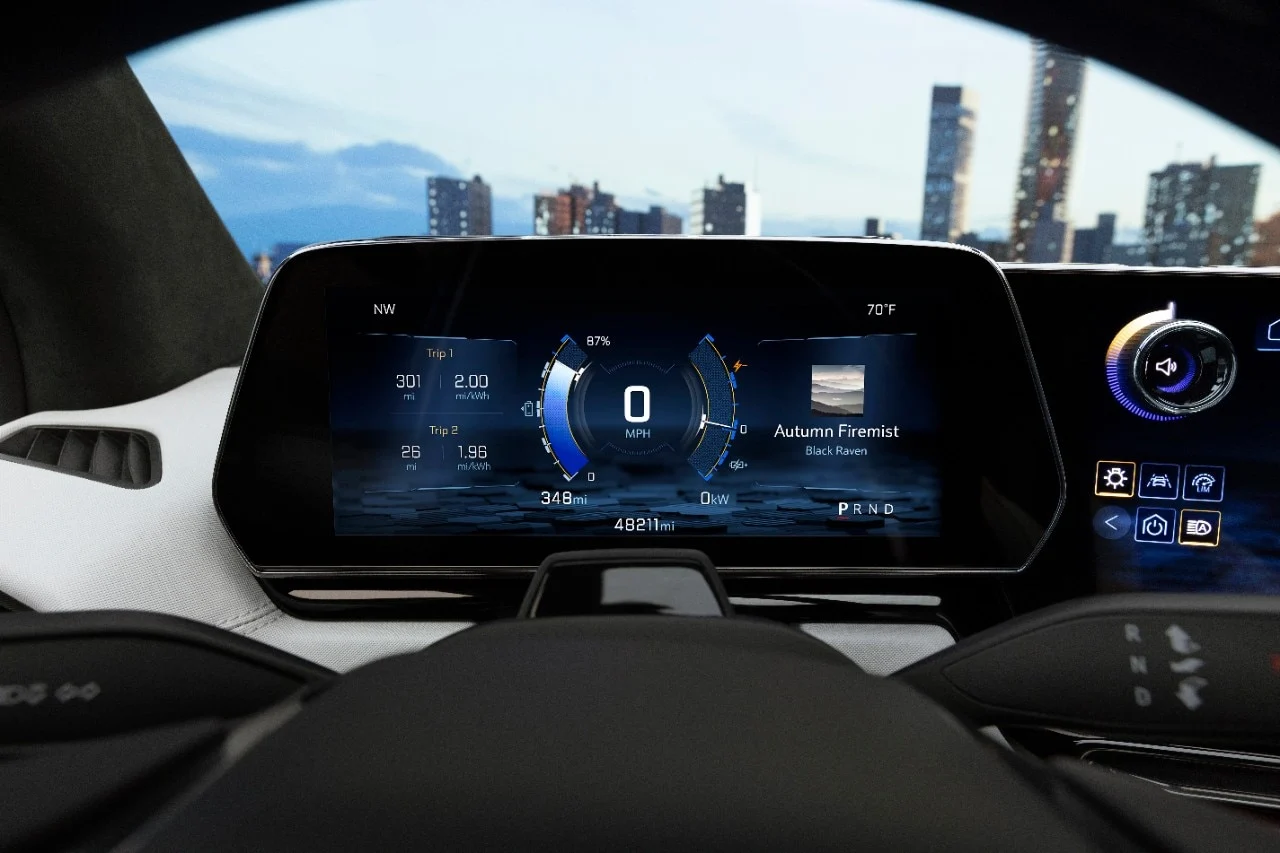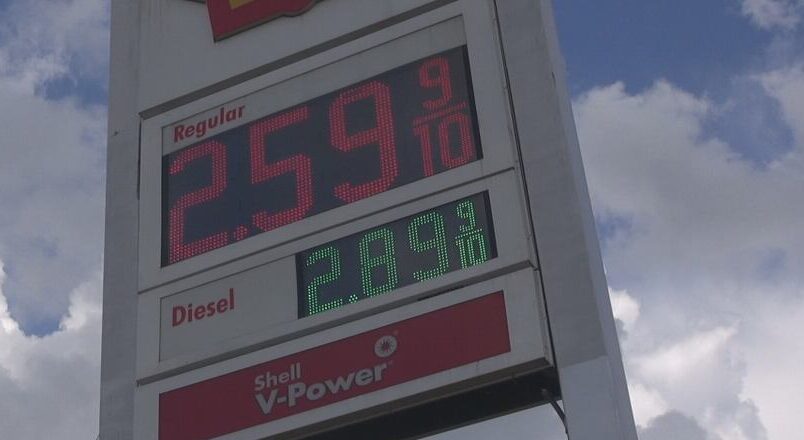The 2025 Chevrolet Impala: Current Status, Specifications and Features
The Chevrolet Impala has long stood as one of America’s most recognizable full-size sedans, embodying decades of automotive heritage and family-focused design philosophy. As we examine the 2025 model year landscape, the Impala’s status presents a complex picture that reflects broader shifts in the automotive industry and changing consumer preferences toward SUVs and crossovers.
Understanding the current state of the Impala requires examining not just its technical specifications and features, but also its market positioning in an increasingly competitive segment. The full-size sedan category faces unprecedented challenges as manufacturers pivot toward electrification and utility vehicles, making the Impala’s story particularly relevant for consumers seeking traditional sedan excellence.
This comprehensive analysis explores every aspect of the 2025 Chevrolet Impala, from its availability across different markets to detailed specifications, features, and positioning within the contemporary automotive landscape. Whether you’re considering a new purchase or exploring the used car market, this examination provides essential insights into one of Chevrolet’s most enduring nameplates.
Status and Availability of the 2025 Chevrolet Impala
Absence of New Models in Canada
The Canadian automotive market tells a telling story about the Impala’s current trajectory. General Motors has not introduced new 2025 Chevrolet Impala models to Canadian consumers, marking a significant shift in the brand’s North American strategy. This absence reflects broader market trends where Canadian buyers have increasingly gravitated toward SUVs and crossovers, leaving traditional full-size sedans with diminished demand.
Canadian dealerships report that existing Impala inventory consists primarily of 2020 model year vehicles and certified pre-owned options. This situation creates both opportunities and challenges for Canadian consumers who prefer the Impala’s traditional sedan layout and spacious interior accommodation. The lack of new models means buyers must either consider alternatives or explore the robust used car market for recent model years.
The Canadian market’s shift away from the Impala also impacts service and parts availability, though Chevrolet maintains support for existing owners through its established dealer network. This ongoing support ensures that current Impala owners can maintain their vehicles properly while potentially influencing future purchase decisions for those loyal to the nameplate.
Production Status in the United States
General Motors made the difficult decision to discontinue Impala production at its Detroit-Hamtramck facility, with the final vehicles rolling off the assembly line in February 2020. This production halt means that no genuine 2025 model year Impalas exist as new vehicles, despite continued interest from consumers seeking full-size sedan alternatives.
The production discontinuation reflects GM’s strategic pivot toward electric vehicles and more profitable SUV segments. The Detroit-Hamtramck facility has since been retooled for electric vehicle production, symbolizing the industry’s broader transformation toward electrification and away from traditional sedan offerings.
However, the Impala’s production legacy continues to influence the used car market, where late-model examples maintain strong demand among buyers seeking reliable, spacious, and well-equipped family transportation. This sustained interest suggests that the Impala filled a specific market niche that remains underserved by current offerings.
“Discontinued” Status in the United Arab Emirates
The United Arab Emirates market officially lists the Chevrolet Impala as discontinued, aligning with global trends affecting the model’s availability. This status reflects not only GM’s production decisions but also regional market preferences that have shifted toward luxury SUVs and crossovers among affluent Middle Eastern consumers.
UAE dealerships continue supporting existing Impala owners through service and parts availability, maintaining the brand’s commitment to customer satisfaction even after production cessation. This ongoing support proves crucial in maintaining brand loyalty and ensuring that current owners feel confident in their vehicle choice.
The discontinued status in the UAE also impacts the regional used car market, where Impalas command attention from buyers seeking American-built sedan alternatives to European and Asian competitors. This market dynamic creates interesting opportunities for consumers willing to explore pre-owned options while potentially limiting long-term ownership considerations.
Detailed Technical Specifications of the Impala
Engine and Powertrain
The final generation Chevrolet Impala featured two distinct engine options that provided buyers with choices between efficiency and performance. The base engine consisted of a 2.5-liter four-cylinder unit producing 197 horsepower and 191 lb-ft of torque, paired with a six-speed automatic transmission. This combination delivered respectable fuel economy while providing adequate power for daily driving scenarios.
The available upgrade featured a 3.6-liter V6 engine generating 305 horsepower and 264 lb-ft of torque, also mated to a six-speed automatic transmission. This powerful option transformed the Impala into a surprisingly capable performance sedan, capable of spirited acceleration while maintaining the refined character expected from a full-size family vehicle.
Both engines incorporated direct injection technology and variable valve timing to optimize performance and efficiency across different operating conditions. The V6 engine particularly impressed automotive journalists with its smooth power delivery and refined operation, characteristics that helped distinguish the Impala from competitors in blind comparison tests.
Dimensions and Capacities
The Impala’s impressive dimensions contributed significantly to its appeal among families requiring maximum interior space without stepping up to SUV platforms. Overall length measured 201.3 inches, while the wheelbase stretched 111.7 inches, creating generous interior accommodations that rivaled luxury sedan offerings costing significantly more.
Interior volume totaled 105 cubic feet of passenger space, with rear-seat passengers particularly benefiting from the extended wheelbase design. Trunk capacity reached 18.8 cubic feet, providing substantial cargo accommodation for family vacations, business travel, or daily errands requiring significant storage capability.
The Impala’s width of 73 inches and height of 58.9 inches created a commanding road presence while maintaining reasonable garage and parking compatibility. These proportions struck an optimal balance between interior spaciousness and external manageability, contributing to the vehicle’s broad appeal across diverse customer demographics.
Fuel Consumption
Fuel efficiency varied significantly between the two available engine options, allowing buyers to prioritize either economy or performance based on individual preferences and driving patterns. The four-cylinder engine achieved EPA ratings of 22 mpg city, 28 mpg highway, and 25 mpg combined, representing competitive efficiency for the full-size sedan segment.
The V6-equipped models delivered EPA ratings of 18 mpg city, 28 mpg highway, and 22 mpg combined, demonstrating impressive highway efficiency despite the engine’s substantial power output. This highway efficiency made V6 Impalas particularly appealing for buyers who frequently undertook long-distance travel or highway commuting.
Real-world fuel consumption typically aligned closely with EPA estimates, particularly during highway driving where the Impala’s aerodynamic efficiency and transmission programming contributed to excellent fuel economy. City driving showed more variation depending on traffic conditions and driving style, though most owners reported satisfaction with overall efficiency given the vehicle’s size and capabilities.
Key Features of the Chevrolet Impala
Technology and Connectivity
The Impala’s technology package centered around the Chevrolet Infotainment 3 system, featuring an 8-inch diagonal color touchscreen that served as command center for entertainment, navigation, and communication functions. This system supported both Apple CarPlay and Android Auto integration, allowing seamless smartphone connectivity and access to preferred applications and content.
Available built-in 4G LTE Wi-Fi hotspot capability transformed the Impala into a mobile internet hub, supporting up to seven devices simultaneously. This feature proved particularly valuable for families with multiple connected devices or business travelers requiring reliable internet access during extended journeys.
The premium Bose audio system delivered concert-quality sound reproduction through strategically positioned speakers throughout the cabin. This system included noise cancellation technology and custom tuning specifically calibrated for the Impala’s interior acoustics, creating an immersive listening experience that rivaled luxury vehicle offerings.
Advanced Safety
Chevrolet equipped the Impala with a comprehensive suite of safety technologies designed to prevent accidents and protect occupants when collisions proved unavoidable. The standard safety package included automatic emergency braking, forward collision alert, and following distance indicator, providing active assistance in preventing rear-end collisions.
Lane keep assist and lane departure warning systems monitored road markings and provided corrective steering inputs or warnings when unintended lane departures occurred. These systems proved particularly valuable during highway driving or in situations where driver attention might be momentarily diverted.
The available adaptive cruise control maintained preset following distances automatically, reducing driver fatigue during long journeys while enhancing safety through consistent speed and spacing management. This system worked seamlessly with the Impala’s smooth powertrain characteristics to provide refined automated driving assistance.
Exterior Design
The Impala’s exterior design philosophy emphasized sophistication and presence without resorting to aggressive styling elements that might alienate conservative buyers. The front fascia featured Chevrolet’s signature dual-port grille flanked by sleek headlight assemblies that incorporated LED daytime running lights and available LED headlight technology.
Body-side sculpting created visual interest while maintaining clean, uncluttered lines that contributed to the vehicle’s aerodynamic efficiency. Chrome accents around windows and door handles provided premium touches that enhanced the Impala’s upscale positioning within Chevrolet’s sedan lineup.
Available 20-inch aluminum wheels filled the wheel wells appropriately while maintaining ride comfort through careful tire sizing and suspension tuning. These larger wheels enhanced the Impala’s visual impact while providing improved handling characteristics for buyers prioritizing dynamic performance over maximum comfort.
Interior Comfort
Interior design prioritized passenger comfort and convenience through thoughtful layout and premium materials selection. Available leather-appointed seating provided both visual appeal and long-term durability, while heated and ventilated front seats enhanced comfort across seasonal temperature variations.
Rear-seat passengers benefited from generous legroom and shoulder room that exceeded many luxury sedan offerings. The rear seat also featured a fold-down center armrest with cup holders and storage compartment, demonstrating attention to passenger convenience throughout the cabin.
Ambient lighting created a premium atmosphere during evening driving, while dual-zone automatic climate control ensured optimal temperature management for front passengers with different comfort preferences. These comfort features contributed significantly to the Impala’s appeal among buyers seeking luxury-level amenities at mainstream pricing.
Overview of Versions and Used Car Market
Available Versions
The Impala lineup historically consisted of three primary trim levels designed to address different customer preferences and budget considerations. The base L trim provided essential features and the four-cylinder engine, targeting buyers prioritizing value and fuel efficiency above luxury amenities.
The mid-level LT trim added convenience and comfort features including remote start, upgraded wheels, and enhanced interior appointments while maintaining reasonable pricing. This trim level represented the volume seller, appealing to buyers seeking balanced equipment levels without premium pricing.
The range-topping Premier trim featured the V6 engine standard along with leather seating, premium audio system, and advanced safety technologies. This variant positioned the Impala competitively against entry-luxury sedans while maintaining Chevrolet’s value proposition.
Used Car Market
The used car market for Impalas remains robust, with strong demand for low-mileage examples from recent model years. Depreciation patterns favor buyers, as the discontinuation announcement initially impacted resale values before market forces stabilized pricing at attractive levels for value-conscious consumers.
Fleet vehicles comprise a significant portion of available used Impalas, typically offering well-maintained examples with comprehensive service records. These vehicles often feature higher mileage but provide excellent value for buyers prioritizing reliability and spaciousness over luxury appointments.
Certified pre-owned programs through Chevrolet dealerships offer additional peace of mind for used Impala buyers, including extended warranties and thorough multi-point inspections. These programs help bridge the gap between new vehicle confidence and used car value for buyers considering Impala ownership.
Market Analysis and Alternatives
Pricing and Positioning
When new, the Impala competed effectively against midsize and full-size sedan alternatives from Toyota, Honda, and Ford. Pricing started in the mid-$30,000 range for base models, with fully equipped Premier variants approaching $40,000 while still undercutting luxury alternatives offering similar features and space.
The value proposition centered on providing maximum interior space, comprehensive feature content, and refined driving characteristics at competitive pricing. This positioning attracted buyers who might otherwise consider compact SUVs but preferred traditional sedan advantages including fuel efficiency, handling, and ride comfort.
Current used car pricing reflects the model’s discontinued status, with recent model years maintaining strong residual values due to limited supply and continued demand. This market dynamic creates opportunities for buyers willing to purchase pre-owned while potentially supporting long-term value retention.
Competition
Direct competitors included the Toyota Avalon, Nissan Maxima, and Chrysler 300, each offering distinct advantages in design, features, or performance. The Avalon emphasized reliability and resale value, while the Maxima focused on sporty characteristics and the 300 provided bold styling and available V8 power.
The Ford Taurus represented the Impala’s closest American competitor before its own discontinuation, sharing similar size, features, and market positioning. Both vehicles faced identical challenges from changing consumer preferences and manufacturer strategic pivots toward SUV platforms.
Luxury alternatives included entry-level German sedans and the Buick LaCrosse, though these options typically commanded premium pricing for similar interior space and feature content. The Impala’s value proposition proved particularly compelling for buyers seeking luxury-level accommodation without corresponding price premiums.
Frequently Asked Questions
Common questions about the 2025 Impala focus primarily on availability and alternatives. Buyers frequently ask about new model availability, leading to discussions about used car options and competitive alternatives that provide similar benefits.
Reliability questions often center on long-term ownership costs and service availability, particularly given the model’s discontinued status. Generally, the Impala’s proven powertrains and established service network provide reassurance for potential buyers concerned about post-purchase support.
Feature comparisons with current SUV alternatives represent another frequent inquiry, as buyers weigh the Impala’s sedan advantages against the perceived utility and fashion appeal of crossover platforms. These discussions often highlight the Impala’s superior fuel economy, handling characteristics, and passenger comfort advantages.
The 2025 Chevrolet Impala story represents both an ending and a testament to enduring sedan excellence. While new production has ceased, the model’s legacy continues through strong used car market demand and satisfied owners who appreciate its blend of space, comfort, features, and value. For buyers seeking traditional sedan advantages in an SUV-dominated market, the Impala remains a compelling choice that delivers on its promises of family-friendly transportation with surprising refinement and capability.
Goodbye Mustang? 2025 Chevrolet Impala Convertible Is …
0 véhicules Chevrolet Impala 2025 à vendre au Canada
Chevrolet Impala 2025 price in UAE




